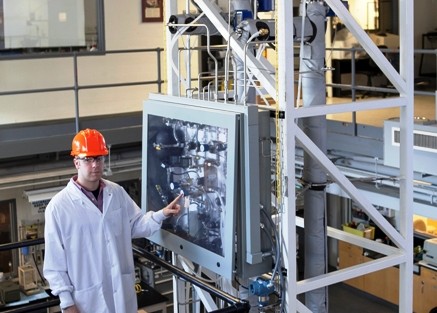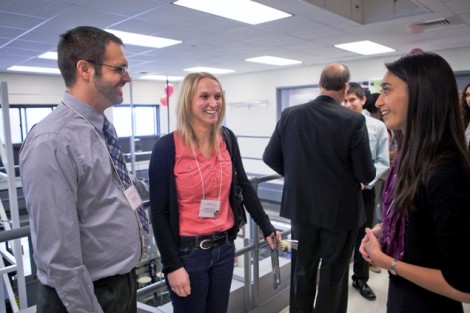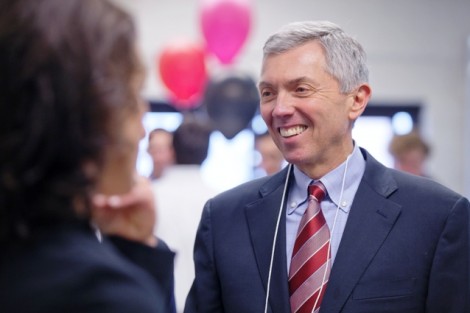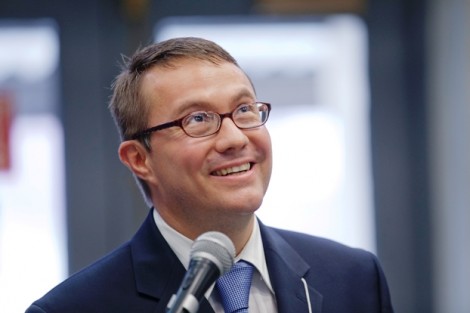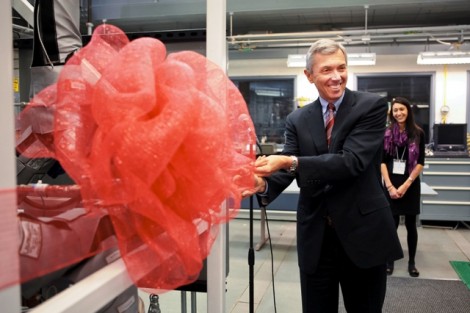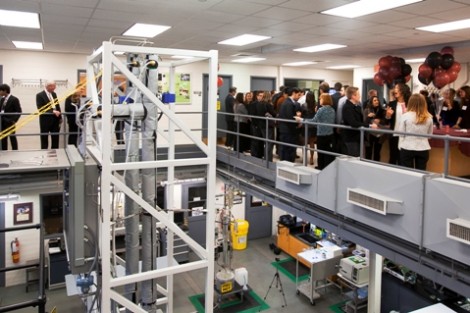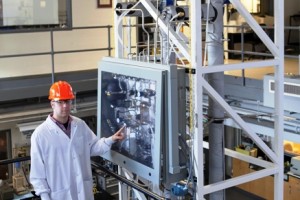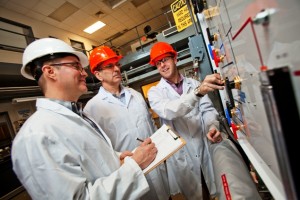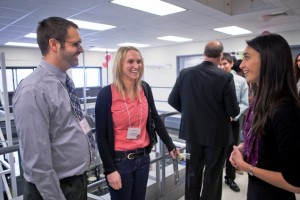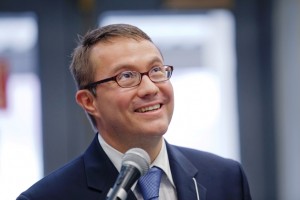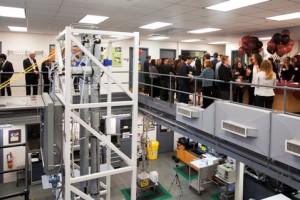Seth Gottlund ’14 has accepted a position with Air Products & Chemicals in Texas, thanks in part to his experience at Lafayette with the type of distillation columns the company uses.
He worked on the new state-of-the-art distillation plant installed in the Chemical Engineering Unit Operations Laboratory as part of his senior design project. Although a bit smaller, this pilot-scale distillation plant is common in industry—and rare at undergraduate schools.
View more images of the distillation plant on Flickr
“The opportunity to operate a piece of equipment that is so sophisticated is unparalleled in the world of undergraduate chemical engineering,” he says. “This type of equipment helps us connect with the traditional chemical engineering industry and gives us experience identical to what we will encounter after graduation.”
The distillation plant was designed and built by chemical engineering graduate John Weyrauch ’04, who co-taught the senior design project with James Ferri, James T. Marcus Chair of Chemical and Biomolecular engineering. A team of 10 students studied and prepared the distillation plant for use in future courses.
A ribbon-cutting ceremony for the plant highlighted the inaugural Lafayette Chemical and Biomolecular Engineering Symposium in March, which Gottlund and fellow chemical engineering graduate Christina Cucinotta ’14 helped organize. More than 150 students, faculty, administrators, and alumni attended the two-day event, which featured alumni speakers, panel discussions, and a student poster session. Stephen Pryor ’71, president of Exxon Mobile Chemical and vice chair of the Lafayette Board of Trustees, presided over the ceremony.
In distillation, mixtures are physically separated based on their differences in relative volatility, explains Cucinotta. Lafayette’s plant can achieve up to 99 percent separation by volume of short-chain alcohols, such as methanol or ethanol, and water mixtures.
Experience with the equipment gives students “a comparative advantage when applying for internships and jobs,” she adds.
The team has been creating modules involving the column for use in labs and courses. Gottlund, for example, ran an experiment on a control loop, which is used to regulate the flow of liquid into a column via a small centrifugal pump. The preliminary data he collected will be used to create an experiment in the Process Controls course.
